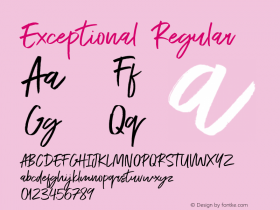
It is quite rare to see topics related to typography make the mainstream news. In a positive sense, ScreenFonts). These two cases were mostly confined to the "in-crowd". The most recent case however exploded all over the internet in France this weekend, then made the national news media, and now is crossing the borders to an international audience. Why? Because we can safely argue the Hadopi logo story categorises as an epic FAIL – what internet lingo describes as the often hilarious combination of failure as a result of lack of skill or sound judgement on the one hand, and sweet irony on the other hand. The multiple layers of failure make this story a particularly tragic one.

First we need a little context. Since January 1st the controversial download law Hadopi has become effective in France. The name is short for Haute Autorité pour la Diffusion des Œuvres et la Protection des Droits sur Internet – roughly translated the High Authority Promoting the Distribution and Protection of Creative Works on the Internet. They follow in the footsteps of Great Britain whose Digital Economy Bill is very similar. Following a spectacular and controversial procedure, and after lengthy debates, the so-called Hadopi law passed last year. In other countries similar legislation is commonly known as the "three strikes" law. It consist of a procedure warning twice people who have illegally downloaded copyright-protected works, before shutting off their internet connection for an indefinite period of time. Not only is the whole household taken offline if any person living there is accused of three acts of infringement, it is also added to a list of addresses to which it is illegal to provide Internet access. To have internet access restored, the "offender" has to allow spyware to be installed on his/her computer, monitoring every single thing that happens on said cpu.
Although the European Parliament and other interest groups call upon fundamental rights to protest against such measures, it seems like a similar legislature may be introduced worldwide as the result of a new intellectual property agreement that is being drawn up behind closed doors. Needless to say Hadopi – the French agency of the same name that's in charge of the country's new anti-piracy scheme – isn't exactly popular. They have come under close scrutiny of their opponents, who are eager to dig up any dirt they can find about them.

The original Hadopi logo presented on Friday, January 8, 2010.
In the early evening of January 9, the day after the Hadopi agency was officially installed, I noticed a tweet by Jean-Baptiste Levée. I wasn't even aware of the Hadopi at that time, but the text in his tweet made me check his link immediately.
French copyright law Hadopi has an unauthorized use of custom font Bienvenue in its logo http://tweetphoto.com/8293377
J E A N - B A P T I S T E L E V É E| "I have a Twitter alert set for the word "logo". I don't remember which tweet exactly notified me of the presentation of the Hadopi logo. The original announcement on the website of the Ministère de la Culture et de la Communication had a link to a PDF announcing the birth of the logo. No need to try it now: since the eruption of the scandal the link on the page has been removed, and when you try to access the URL via Google cache it yields an Error 404 page. When I opened the downloaded document I immediately recognised the typeface in the logo as Bienvenue. I collaborated with Jean-François Porchez for two years until spring 2008, so I know his work pretty well. ; )"
It was Jean-Baptiste's comment on a blog post on Graphism.fr, the blog by graphic designer Geoffrey Dorne, that confirmed the type in the Hadopi logo was indeed Bienvenue and got the ball rolling.
You may wonder now – where's the problem? The type in a logo needn't be custom designed. Of course you can use an existing font, either out of the box, or modified to better fit the intended shape or image. If all this is allowed by the End User Licence Agreement, what's the big deal?

Bienvenue in use on a France Télécom branded store

Bienvenue in use on a France Télécom advertisement poster
Here's the big deal. Bienvenue is anexclusive corporate typeface. It was designed in 2000 by Jean François Porchez for France Télécom, the leading French telephone and internet company. The type family was developed in conjunction with Landor Associates, who redesigned the corporate identity. It is intended for use in all France Télécom communication and advertising. The typeface consists of a family of four variations, plus a branding font, a semiserif titling font, and a pictogram font. Because Bienvenue was nominated for Trophée d'Or de la Typographie in 2001, it is quite well known within the design community.
So in short Bienvenue is a proprietary typeface for France Télécom, for exclusive use within the company, and as such wasnever to be made available for the general public– they have worldwide exclusivity in perpetuity. Yet somehow the typefaces made their way to the font sharers and pirate sites, and have since then become an illegal fan favourite. For example a couple of years ago I personally had a very hard time convincing a French fashion giant that Bienvenue, which had been specified for one of their brands by the agency responsible for their corporate image, could not be used as it infringed the exclusivity of France Télécom.

Bienvenue sample by Jean François Porchez


Hadopi logo simulated with Bienvenue by Jean François Porchez
By the end of the weekend the story was raging like a wildfire, and on Monday it even was a news item on LCI, the news channel of French commercial broadcaster TF1. Of course you have to appreciate the irony – the agency in charge of enforcing France's new anti-piracy legislation using a pirated proprietary font in its very own logo. Bienvenue isn't available for licensing, and neither France Télécom nor Jean François Porchez were contacted to request an exceptional permission to use it. It painfully demonstrates the amateurism and general cluelessness of the agency's communication consultants, and puts Plan Créatif in a very bad spotlight. This Paris-based self-professed "militant agency" designed the logo after winning a competition organised for this purpose by the French Ministry of Culture and Communication. To prove that it indeed is Bienvenue, Geoffrey Dorne created at the request of his brother Korben this gif superimposing the Demi weight stretched 110% on the Hadopi logo.

Bienvenue superimposed on the original Hadopi logo
Soon Hadopi and Plan Créatif were scrambling to rectify the snafu. On Monday, January 11, Plan Créatif sent out e-mails admitting the mistake, and claiming that the logo presented just before the weekend was in fact a "sketch".
Logotype HADOPI: À la suite d'une erreur de manipulation informatique, une esquisse de logotype qui avait été écartée lors des phases traditionnelles de vérification de similitude, a été malencontreusement présentée comme solution graphique définitive. Cette erreur vient d'être réparée.
This roughly translates as follows.
Logotype HADOPI: Due to an erroneous digital manipulation a sketch version of the logo which had been shelved during the traditional verification procedures was unfortunately presented as the final design solution. This error was corrected.
The so-called "final version" of the logo was attached to this e-mail.

Indeed, the logo looks slightly different. The typeface this time is FS Lola, a design by Phil Garnham for FontSmith. The overall dimensions of the logo vary as well: the new version is less wide. Only one element remains unchanged – the full name in red set in Jeremy Tankard's popular Bliss.
You'd think the story would end here, but whaddayaguess – it actually gets even worse. The important question now was if the initially presented logo indeed was a case of "erroneous digital manipulation" of files, or if the new logo was a more insidious kind of manipulation, a smoke screen to cover up the foul play. Just like some fellow bloggers, I contacted both FontSmith and Jeremy Tankard. They confirmed that FS Lola and Bliss were rush-ordered on Monday morning, January 11, the very day the new logo was presented.
Either way the logo infringed at least two licenses. Obviously Bliss which was used in both versions had never been licensed by Plan Créatif prior to last Monday, three days after the official presentation. Nor was FS Lola, and if the Bienvenue version was initially intended to be the final logo as we all surmise, then the typeface even isn't available for licensing at all.

Yet the final blow still was to come. A simple search on the INPI website – the Institut National de la Propriété Industrielle or National Institute for Intellectual Property – reveals that the original logo using Bienvenue was registered on November 16, 2009, almost two months ago, and published on Christmas eve. This dispels any doubt that the Bienvenue logo was indeed the intended design, and that the hastily cobbled-together new version presented this Monday is nothing but a subterfuge. We can safely conclude that this is one epic FAIL that will haunt the much-maligned Hadopi for a while.

Jean François Porchez. Photo by Olivier Roux
Although he is not at liberty to reveal any details yet, Jean François Porchez commented that KGA avocats – his lawyers in charge of this case – have initiated the procedure to contact all parties concerned with the aim to resolve this problem as fast as possible. Pending the resolution of the problem additional information will be divulged in due time. Understandably the Alliance française des designers (French Alliance of Designers) follows this case from close-by and supports the action by Porchez Typofonderie.
What does this convoluted story teach us? Porchez briefly commented in the news item on LCI mentioned above.
J E A N F R A N Ç O I S P O R C H E Z| "What we have here is a classic example, where the authority which is supposed to protect artists pirates my work. It makes me smile, but at the same time we need to find the best possible solution for this problem."
The main lesson to be learned is that everyone is personally responsible for each and every font stored on his/her hard drive. Every person must be aware where those fonts come from, and be very cautious of freeware and shareware. Some of it is fine, but the vast majority is of dubious quality. And unless it is acquired from reputable websites, the origin of the good fonts can be very shady, if not to say illegal, as this case clearly illustrates.
The story on BoingBoing
Italian translation / Belorussian translation of this article.









